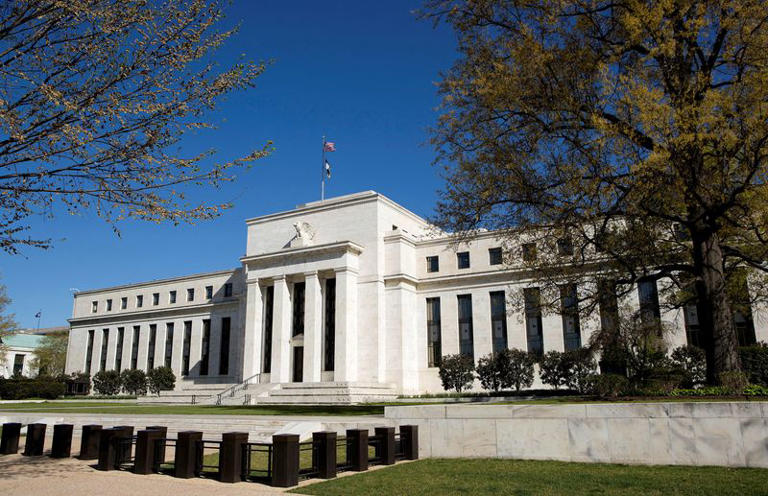The upcoming Federal Reserve meeting, previously anticipated as a potential moment for the central bank’s first interest rate cut, has now diminished in significance. Despite initial expectations, futures markets currently indicate a minimal likelihood of a rate cut during the March 20 meeting. Instead, June or July are now seen as more favorable timing for such a move. This shift is influenced by continued verbal resistance from Fed officials throughout the year, as well as ongoing concerns regarding persistent inflation and robust economic growth.
The upcoming Federal Reserve meeting is expected to provide valuable insights into future monetary policy decisions, including updates on policymaker projections through the quarterly “dot plot” and discussions on potentially slowing the Fed’s balance sheet runoff. With investors reevaluating the long-term trajectory of the U.S. economy, particular attention will be paid to the Fed’s assessment of the assumed “neutral” policy rate, which neither stimulates nor restricts economic growth over the long term.
Fed policymakers have largely maintained their long-run policy rate assumption at 2.5% since before the pandemic, with a brief adjustment to 2.4% in early 2022 that was quickly reversed. This suggests they anticipate returning inflation to the 2% target over time, indicating a “real” neutral rate of just 0.5% when accounting for inflation — significantly lower than the current real policy rate of about 2.5%.
A potential increase in the Fed’s long-run policy rate assumption may not directly influence decisions on whether or when the Fed initiates rate cuts. Even if the Fed were to cut rates by 200 basis points over the next two years, it could still consider itself in a “restrictive” mode, aiming to curtail economic activity and inflation.
However, the adjustment in the assumed neutral rate holds significance in determining the Fed’s flexibility during an easing cycle and its perceived “terminal rate,” or the rate at which it would aim to stabilize the economy. This aspect of the discussion is closely monitored by investors for insights into the Fed’s future policy direction.
While the exact neutral rate is challenging to ascertain in real time and remains elusive even after it’s reached, the Fed’s estimates provide valuable clues about its assessment of the economy’s underlying dynamics. Chair Jerome Powell and other Fed officials often express uncertainty about pinpointing the neutral rate precisely.
Nevertheless, their estimates shed light on their perceptions of the current policy rate’s restrictiveness and the eventual destination for rates as the Fed implements monetary policy adjustments.
Fed officials, including non-voting member Neel Kashkari, have reignited discussions about the neutral rate, suggesting it may have increased during the post-pandemic recovery period. Mary Daly of the San Francisco Fed estimated the neutral rate to be between 0.5% and 1.0%, indicating a long-run policy rate of 2.5-3.0%. Thomas Barkin of the Richmond Fed and Loretta Mester of the Cleveland Fed have also expressed openness to the idea that the neutral rate might have risen.
However, John Williams of the New York Fed sought to temper expectations of a significant change, suggesting that the neutral rate hasn’t increased much since the pandemic. Despite this uncertainty, even a modest rise in the median “dot” on the long-run rate could impact market expectations, influencing factors like the dollar, Treasury debt, and the stock market.
Market projections indicate that Fed policy rates are expected to settle around 3.0-3.5% over the next two years, significantly lower than the Fed’s standing long-run policy rate dot of 2.5%. A potential increase in the “dot” to 3%, similar to levels seen in 2018, could impact assumptions about the terminal rate of easing.
The Fed’s considerations reflect ongoing analysis of factors such as U.S. disinflation, labor market resilience, and the role of rising public debt levels. Revisions to immigration statistics and the potential impact of fiscal expansions on the natural interest rate are also under scrutiny, with some estimates suggesting a 20-50 basis point increase in response to higher debt-to-GDP ratios. Given the substantial rise in U.S. debt/GDP since the pandemic, these factors are prompting reassessment of long-term economic trajectories.
